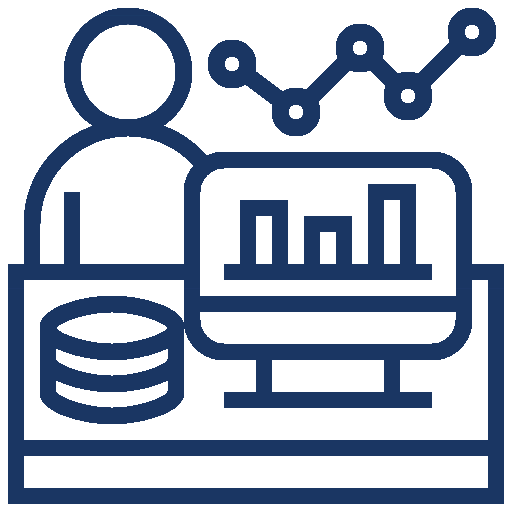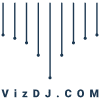“Get yourself a plan, Stan”
There’s an old saying that goes “If you fail to plan, you are planning to fail” and when it comes to learning Tableau, this could not be more true!
Sure, you can just jump in and start exploring the software on your own. But if you really want to make the most of your time (and avoid getting frustrated), it’s best to have a plan.
Think about it: if you’re trying to learn Tableau without a plan, you’ll likely end up going in circles, wasting time on things that aren’t important, and not making the progress you want.
Quick Wins in the Journey of Becoming a Data-Driven Organisation
Whether you are a Tableau novice user, are self-taught, or have been on several training programs and are still hungry to learn… if you want to progress with Tableau, the best thing you can do is build yourself a 90-day plan.
If you take the time to sit down and map out a learning plan, you’ll be able to focus your efforts, learn more efficiently, and make much better use of your time.
Plus, it’s just a good way to stay organised and make sure you’re covering all the bases.
If you were one of our training and coaching delegates, you’d follow the framework of Tableau Training on Tap to learn the functional approach to learning Tableau through 9 modules. At the end of that, we will help you build your 90-day plan using the same techniques as if you were one of our support clients, who we then help guide through that plan, troubleshooting and inspiring along the way.
But how can I build a plan consistently, across my team and my organization? Start with a framework…
To help you get started, here is our 5-Point Framework you can use to identify your bottlenecks:
1) User Requirements
Do you know them? Are they understood in terms of what needs to be delivered? Do you know how your user will use the information and insights?
2) Data Pipeline
Do you have access to the right data to meet your user requirements? Have the data requirements been well defined and communicated to the data providers? If not, don’t let this slow you down. Grab some export data/views/custom SQL extracts, go through a couple of dashboard iterations, and clarify the real needs of the data pipeline and feedback to the design and build of those flows.
3) Analytic Capabilities
Are your dashboards able to identify all relevant insights that meet the user requirements? Are you using capabilities of Tableau that guide and steer your users to the insights, rather than making them hunt for them? Are there better charts to use for this data and the questions being asked?
4) Self-service Solutions
Do your dashboards enable your users to drill down through the insights and enable them to take action? Are your dashboards flexible enough to cover 80% of the use cases that the target users have with this data? Are there other available data sets that could be combined to enrich analytical capabilities?
5) Enterprise Scale-up
Are you leveraging your investments in data fully? Are the right data products being made available to the right people in the right place? This includes secure access, embedding dashboards in the right place, providing the right access to people as well as building up your community to enable a data-led culture throughout your organisation.
As an individual, identify one of the 5 areas above and focus on the first one that is “in the red” from the top down. This will ensure that you are always making progress on Tableau projects that have a high impact on your organisation.
As a team and enterprise, make sure you have the right balance of resources and focus in these areas.
A step-by-step guide to creating your own 90-day plan
Reach for the sky!
To make the most of your time learning Tableau, it’s best to have a plan. Yesterday I ran through our 5-Point Framework that you can use to identify your bottlenecks. Now it’s time to draft your 90-day plan.
The steps are easy and obvious. But somehow, we often forget to go through them regularly – hence our idea that it’s only a 90-day plan. The more frequently you do this, the better you get.
- Brainstorm. First, using the 5-point Framework above to identify your biggest bottleneck linked to business needs, brainstorm all the projects/learning opportunities that you could work on in the next 90 days.
- Prioritise. Cherry-pick the top 3 to 5 that will have the greatest impact for the least effort. Identify what help and resources you need to get things done. Identify your best learning resources/community projects/coaching options.
- Plan. Last, plan in time. Make sure your focus is on one of these priority areas each week and that you have daily, weekly, and monthly milestones to keep you accountable. By having a solid plan, you’ll be able to make amazing progress in your Tableau skillset in just 90 days!
Rinse and repeat steps 2 & 3 until the 90 days are up and then go back to step 1 for your next 90-day plan.
Creating a 90-day plan may seem daunting, but it doesn’t have to be! By breaking it down into simple steps, you can create a plan that will help you focus your efforts, make the most of your time, and achieve your goals.
Donnie is a Data Visualisation Lead for Learning & Development at Sky. They are currently scaling out Tableau to leverage their investment in data and data-led decision-making at Sky. Donnie wasn’t sure if Visual DJ could help them, as they already had a training program. They knew they had some gaps to fill and they knew they wanted to deliver cost-efficient growth of the use of Tableau and their data assets.
Donnie booked a Discovery Call with us, where we talked through his current position, plans and the challenges that he faced. We devised a 90-day plan for his team during that call and set about delivering on that shortly afterward.
Donnie wrote “Many thanks again for the sessions we have run through so far. We have only had two ‘playbook’ sessions so far but we already have a whole host of inspirations and ideas to work through to improve the delivery of our own sessions. Just what we needed!”
I will be happy to brainstorm what your 90-day plan needs to focus on and we can discuss whether we can assist you in that or point you towards suitable resources.
All you have to do is
- Click on ‘Book a Discovery Call’.
- Find a suitable time in our diaries.
- Spend 2 minutes providing a little information.
I look forward to discovering what your specific needs are and discussing how you can achieve quicker delivery of performance improvement and action-driving insights throughout your organisation!






